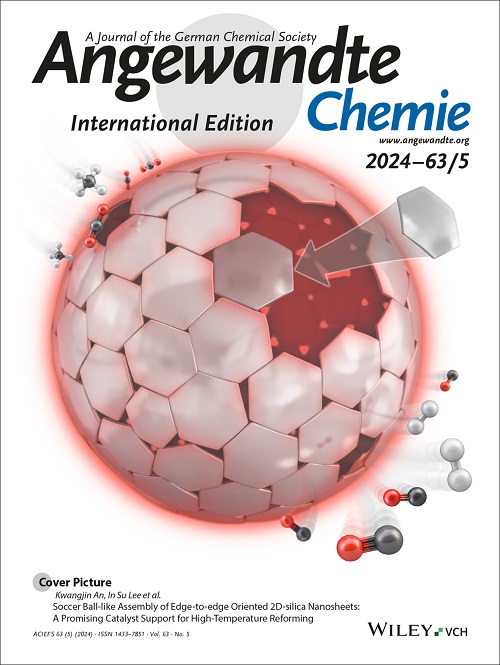Efficient Generation of Negative Hydrogen with Bimetallic-Ternary-Structured Catalysts for Nitrobenzene Hydrogenation
IF 16.1
1区 化学
Q1 CHEMISTRY, MULTIDISCIPLINARY
引用次数: 0
Abstract
Transition metal-catalyzed transfer hydrogenation (TH) with in situ negative hydrogen (H-) has received extensive attention as an alternative to conventional high-pressure hydrogenation processes. However, the insufficient activity of hydrogen production and unclear the conversion process of hydrogenation remain a great challenge. In this work, brand new bimetallic ternary-structured catalysts (Ru1+nM1-TiO2, M=Co, Cu, Fe, Ni) were synthesized to efficiently generate H- donors from ammonia borane (AB, NH3BH3) for nitrobenzene hydrogenation under moderate conditions. The Ru1+nCo1-TiO2 catalysts exhibited highest activity for hydrogen production form AB hydrolysis with a TOF value of 2716 min-1. The Ru1+nCo1-TiO2 achieved >90% yields within 3-4 hours in converting nitrobenzene to anilines using AB. Mechanistic studies revealed that the high hydrolysis activity was due to that the Ru SA and Co SA sites of the bimetallic-ternary-structured catalyst required the lowest energy for the activation of AB and H2O, respectively. Remarkably, the Co SA and Ru clusters exhibited an obvious synergistic effect in the TH process, which promoted the tandem hydrogenation of nitroaromatics. This work demonstrated an efficient approach to generate H- donor with bimetallic-ternary-structured catalysts in TH process and further provided new inspiration on the development of multifunctional catalysts.求助全文
约1分钟内获得全文
求助全文
来源期刊
CiteScore
26.60
自引率
6.60%
发文量
3549
审稿时长
1.5 months
期刊介绍:
Angewandte Chemie, a journal of the German Chemical Society (GDCh), maintains a leading position among scholarly journals in general chemistry with an impressive Impact Factor of 16.6 (2022 Journal Citation Reports, Clarivate, 2023). Published weekly in a reader-friendly format, it features new articles almost every day. Established in 1887, Angewandte Chemie is a prominent chemistry journal, offering a dynamic blend of Review-type articles, Highlights, Communications, and Research Articles on a weekly basis, making it unique in the field.

 求助内容:
求助内容: 应助结果提醒方式:
应助结果提醒方式:


